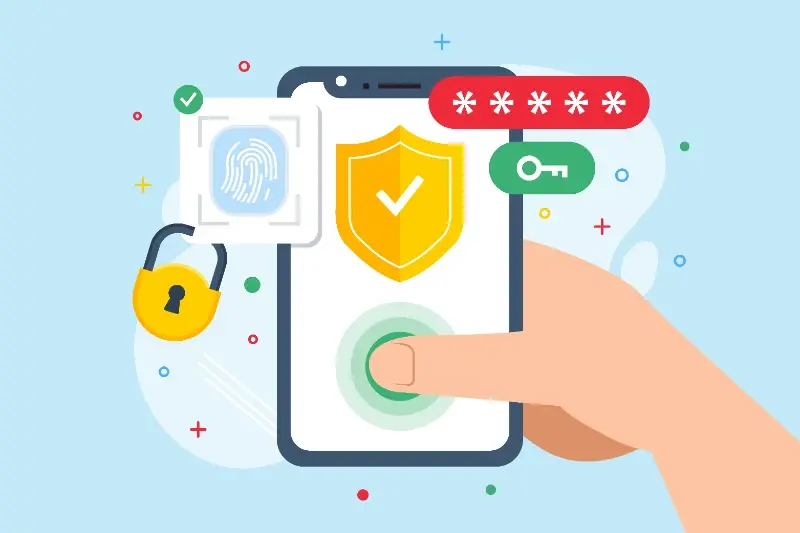API Security Vulnerabilities Costing Enterprises Millions
How much would it cost your business if hackers broke into your mobile app and stole customer data? If you're like most companies, you probably haven't thought about this scenario in detail—but you really should. API security vulnerabilities are becoming one of the biggest threats facing enterprises today, and the financial damage they cause is staggering.
Here's what makes this problem so serious: APIs are everywhere in modern business. They're the invisible bridges that connect your mobile apps to your databases, payment systems, and customer information. Every time someone logs into your app, makes a purchase, or updates their profile, APIs are working behind the scenes. That's brilliant for user experience, but it also creates lots of entry points for cybercriminals.
The average cost of a data breach has reached £3.5 million per incident, with API-related breaches often costing significantly more due to their widespread access to sensitive systems
What's particularly worrying is how these vulnerabilities often go unnoticed for months. Unlike a broken website button that users complain about immediately, API security flaws lurk in the background—quietly exposing your business data whilst everything appears to be working perfectly. By the time companies discover the breach, the damage is done. Customer trust is shattered, regulatory fines start piling up, and the costs just keep climbing. The mobile app development world has changed rapidly over the past few years, but many businesses are still using outdated security practices that leave them exposed.
What Are API Security Vulnerabilities
API security vulnerabilities are weaknesses in the way your application programming interfaces handle data, authenticate users, or protect information. Think of APIs as the messengers that carry information between your mobile app and your servers—when these messengers aren't properly protected, bad actors can intercept, steal, or manipulate the data they're carrying.
These vulnerabilities come in many forms, but they all share one common trait: they create opportunities for cybercriminals to access information they shouldn't have. Some vulnerabilities allow attackers to see sensitive user data, whilst others let them pretend to be legitimate users or even take control of entire systems.
The Most Common Types of API Vulnerabilities
- Broken authentication that lets unauthorised users access protected areas
- Excessive data exposure where APIs share more information than necessary
- Missing rate limiting that allows attackers to overwhelm your systems
- Injection attacks that trick your API into running malicious code
- Security misconfigurations that leave default passwords or open ports
- Insufficient logging that makes it impossible to detect attacks
What makes API vulnerabilities particularly dangerous is that they often go unnoticed for months or even years. Unlike website security issues that might be visible to users, API problems typically happen behind the scenes. Your app might look perfectly normal whilst attackers quietly harvest user data or manipulate transactions.
The challenge becomes even greater when you consider that modern mobile apps often connect to dozens of different APIs—payment processors, social media platforms, analytics services, and more. Each connection represents a potential entry point for attackers, which means securing your APIs isn't just about protecting your own code; it's about protecting every single integration your app relies on.
The Real Cost of API Breaches
When API security vulnerabilities get exploited, the financial damage can be staggering. We're talking about costs that go far beyond the initial breach—enterprise API security failures ripple through every part of a business, creating expenses that many companies never see coming.
The immediate costs are obvious enough: emergency response teams, forensic investigations, system repairs. But here's what catches most businesses off guard—the long-term financial impact. Customer compensation claims start rolling in; regulatory fines pile up (especially with GDPR and similar regulations); legal fees spiral out of control. Then there's the revenue loss from customers who simply stop trusting your platform.
Breaking Down the Numbers
Security costs from API breaches typically fall into these categories:
- Incident response and technical remediation
- Legal fees and regulatory fines
- Customer notification and compensation
- Lost revenue during downtime
- Increased insurance premiums
- Long-term customer churn
Mobile app APIs face particular risks here because they handle such personal data—payment information, location data, personal messages. When these get compromised, the reputational damage hits harder and lasts longer than traditional web-based breaches.
I've seen companies spend more on post-breach recovery than they would have invested in proper API security from the start. It's a harsh lesson that prevention really is cheaper than cure; but unfortunately, many businesses only learn this after paying the price.
Calculate your potential breach costs annually—include everything from downtime to customer compensation. This figure often justifies investing in proper API security measures upfront.
Why Mobile Apps Face Unique API Risks
Mobile apps are different beasts entirely when it comes to API security—and I've learnt this the hard way through years of building them. Unlike web applications that run in controlled server environments, mobile apps live on devices that users own, control, and can modify. This creates a whole new set of security challenges that many developers don't fully grasp until it's too late.
The biggest issue? Your API calls are happening in hostile territory. When someone downloads your app, they essentially have a copy of your code sitting on their phone. They can inspect it, reverse-engineer it, and figure out exactly how you're communicating with your servers. That API key you thought was safely hidden in your app bundle? It's not hidden at all—anyone with the right tools can extract it in minutes.
The Network Problem
Mobile devices connect to all sorts of networks throughout the day: public Wi-Fi in coffee shops, dodgy hotel connections, cellular towers that might not be what they seem. Each connection is a potential point where someone could intercept your API traffic. Even worse, users often install apps that monitor network traffic, sometimes without realising the security implications.
Device Compromise Risks
Then there's the device itself. Jailbroken iPhones, rooted Android phones, debugging tools, and malware can all compromise how your app handles API communications. Your beautifully crafted security measures become worthless when running on a compromised device that's actively working against you. This is why mobile app security requires a completely different approach—one that assumes the client side is never truly trustworthy.
Common API Security Mistakes That Cost Money
After working with countless mobile apps over the years, I can tell you that the same API security vulnerabilities keep appearing again and again. It's like watching the same horror film on repeat—you know exactly what's going to happen, but companies keep making the same costly mistakes anyway.
The biggest culprit? Weak authentication systems. Too many development teams still rely on simple username-password combinations or poorly implemented token systems. When hackers crack these defences, they gain access to everything—user data, payment information, business secrets. One weak authentication point can cost a company millions in damages and regulatory fines.
Data Exposure Through Poor Validation
Another expensive mistake involves insufficient input validation. When APIs don't properly check incoming data, attackers can inject malicious code that steals sensitive information. This isn't some advanced hacking technique; it's basic security that gets overlooked during rushed development cycles.
The average cost of a data breach caused by API vulnerabilities now exceeds £3.2 million for mid-sized enterprises, with recovery taking an average of 287 days
The Rate Limiting Problem
Many mobile app APIs also lack proper rate limiting controls. Without these safeguards, attackers can overwhelm systems with requests, causing crashes or extracting data through automated attacks. The financial impact goes beyond immediate downtime—there's lost revenue, customer trust damage, and emergency response costs.
What makes this particularly frustrating is that most of these API security vulnerabilities are completely preventable. Companies spend fortunes cleaning up messes that could have been avoided with proper security planning from day one.
Building Secure APIs That Protect Your Business
Right, let's talk about what actually works when it comes to protecting your APIs. After watching countless businesses learn this the hard way, I can tell you that good API security isn't rocket science—it just needs to be done properly from the start.
The foundation of any secure API starts with proper authentication and authorisation. Think of authentication as checking someone's ID at the door, whilst authorisation decides what rooms they're allowed to enter once they're inside. Most successful implementations use token-based systems like OAuth 2.0 or JWT tokens, which expire automatically and can't be easily copied or stolen.
Your API Security Checklist
- Use HTTPS everywhere—no exceptions, even for internal APIs
- Implement rate limiting to stop automated attacks dead in their tracks
- Validate every single input that comes through your API endpoints
- Log everything but never store sensitive data in those logs
- Keep your API documentation private and share it only with authorised developers
- Regular security testing should happen before every major release
Here's something that catches many developers off guard: your API is only as secure as your weakest endpoint. I've seen perfectly secure payment APIs compromised through unsecured user profile endpoints that nobody thought were important.
Monitor and Respond Quickly
Setting up proper monitoring means you'll know about attacks within minutes, not months. Real-time alerts for unusual traffic patterns, failed authentication attempts, and unexpected data requests can save your business from becoming another headline. The best API security strategies I've seen treat monitoring as seriously as the initial development—because threats don't take holidays, and neither should your security systems.
Many developers also overlook the risks that come with using AI-generated code for security-critical components. If you're ensuring your AI-coded app is secure, you'll need extra vigilance around API endpoints and authentication systems.
Conclusion
After working with countless enterprises over the years, I can tell you that API security vulnerabilities aren't just a technical problem—they're a business problem that hits where it hurts most: your bottom line. The numbers don't lie; companies are losing millions because they treated API security as an afterthought rather than a priority.
Mobile apps make this challenge even trickier because they're sitting on users' devices, completely outside your control. Every API call is exposed, every endpoint is potentially vulnerable, and every mistake can cost you dearly. But here's what I find encouraging—most of these vulnerabilities are completely preventable with the right approach.
The enterprises that get ahead of this aren't the ones with the biggest budgets or the fanciest tools. They're the ones that understand security needs to be baked into their API development process from day one. They implement proper authentication, validate every input, encrypt sensitive data, and monitor their APIs like their business depends on it—because it does.
The cost of building secure APIs will always be a fraction of what you'll pay if something goes wrong. Data breaches, regulatory fines, lost customers, damaged reputation—these costs add up quickly and can take years to recover from. But companies that invest in proper API security from the start? They sleep better at night knowing their customers' data is protected and their business is safe.
The choice is yours, but make it before it's made for you.
Share this
Subscribe To Our Blog
You May Also Like
These Related Stories

IoT Security in Mobile Apps: What You Need to Know

API Security Vulnerabilities That Break Mobile Platforms





